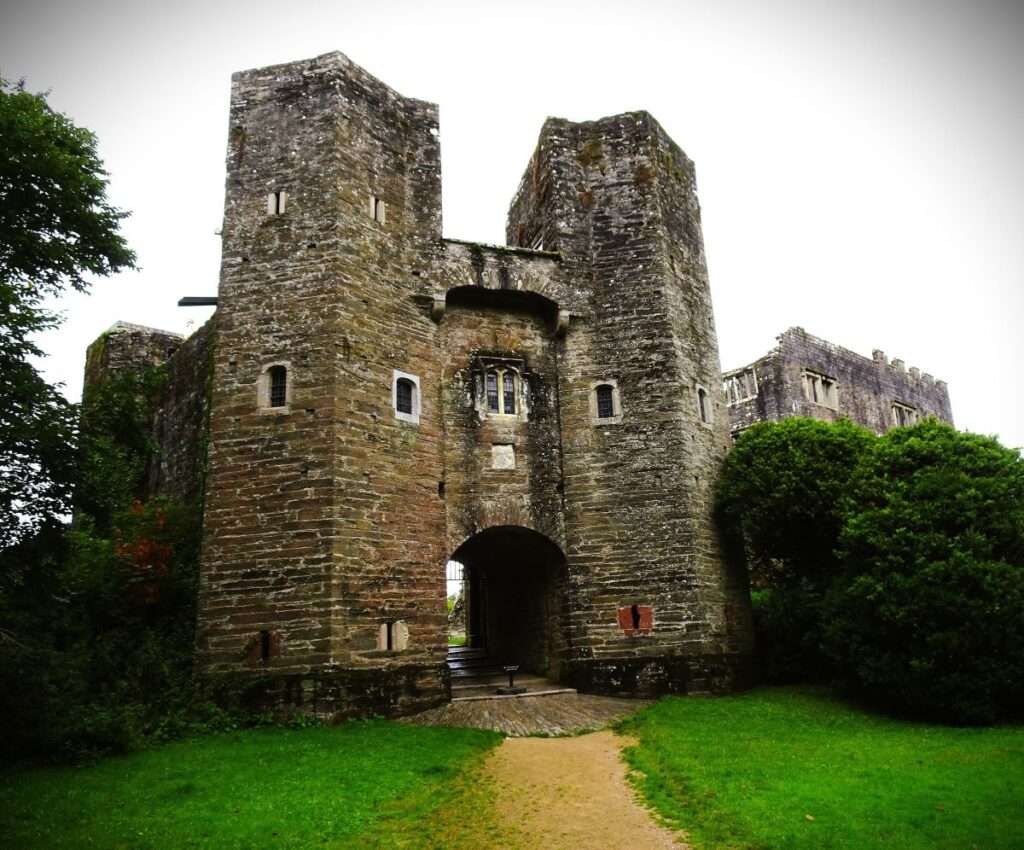England’s most haunted castle has been imprinted in my mind since discovering it two years ago. Mr Word Loft and I had been travelling from Dartmouth late one afternoon and Berry Pomeroy was closed. I’m amazed it has taken us so long to return.
Driving down through Gatcombe Valley is peaceful and surreal, as it feels like it is miles from civilisation. The woodland is verdant, although the fern is tinged russet and on its way to becoming autumn’s crackling bracken.
The castle ruins have a fascinating history and were built in one of my favourite periods. Gunports and a murder hole can be seen when walking through the gatehouse archway, a reminder of how dangerous life was in Devon troubled by feuding landowners. In those days it would have been approached by a drawbridge over a moat, but that was filled in centuries later at a less challenging period before the castle was abandoned. Today it is under the care of English Heritage.
At the end of the 15th century, the Pomeroy family were responsible for its creation and it was erected on land gifted by William the Conqueror to Ralf de Pomania. However, when the Pomeroys’ found themselves in financial difficulties, Edward Seymour became the owner in 1547. He was the eldest brother of Jane Seymour, famous for becoming Henry VIII’s third wife who bore him a son, Edward. When Henry died, the boy succeeded to the throne aged nine years old. Edward Seymour was appointed his guardian and an important figure in the governing of England.
Regal and romantic is the best description of the tumbledown fortress, and although ghosts are believed to frequent it, there is a welcoming ambience to the site. Maybe it would feel different at night or in the winter, but I don’t think I’ll venture back then, after listening to stories about the castle’s spectres.
Grey uneven steps and the defensive curtain wall lead around the perimeter and include St. Margarets Tower. I was intrigued to see a three-aperture canon placement, an innovative invention when first installed.
The structure is also the domain of two of the spirits spoken about earlier. Margaret Pomeroy, the White Lady, was imprisoned and starved to death by her sister in the dungeons. And the Blue Lady, the daughter of a Norman knight, floats menacingly about in search of her murdered baby. Thankfully, they weren’t home when I visited.
Further around on the opposite side of the grounds, there are terraces where the new great hall and long room once stood. Views from this vantage point over the vale are stunning and must have seemed even more so through the large paned windows back then.
In the middle of the location are the courtyard and the remaining walls of a four-storeyed fortified mansion house. Graffiti from all ages is etched on the mantle over the cooking hearth in the kitchen, and some patches of ancient plaster remain on the upper floors’ stonework where the household and lords lived.
I stopped for a few minutes in the Elizabethan Great Hall, imagining the feasts held there. Dishes clattering, lutes being strummed, merry chatter and laughter, with roasting meat aromas lacing the air.
This reminds me of the Berry Pomeroy Castle Café where we tucked into the best roast pork dinner and trimmings I’ve savoured in years. Too full to eat dessert and needing to burn off calories, we trekked around the outside of the castle walls. A scenic little route with fish ponds and ducks, a stream and the most wonderful array of wildflowers.
Until next time,
Sue. X
